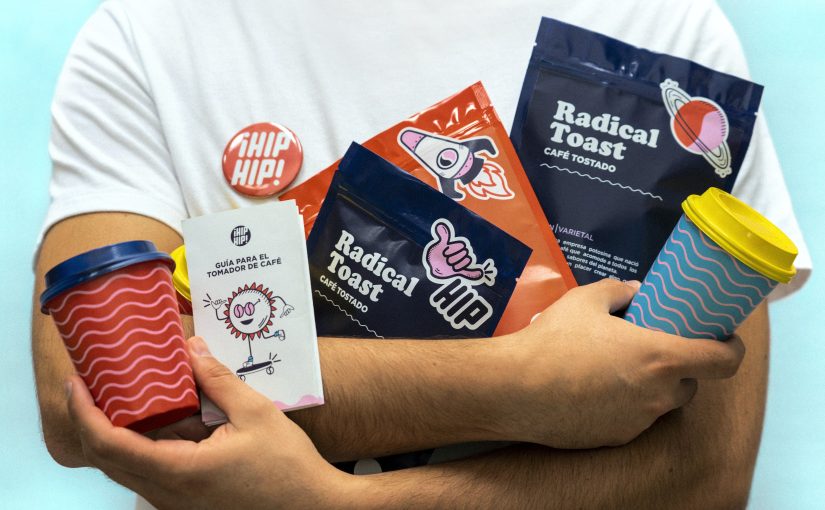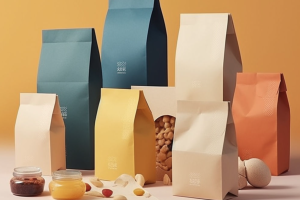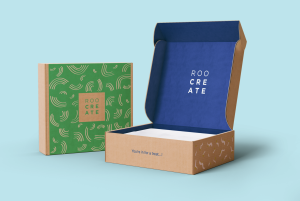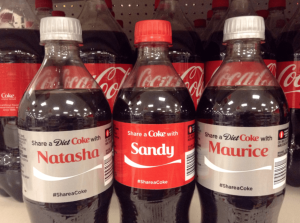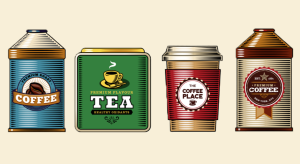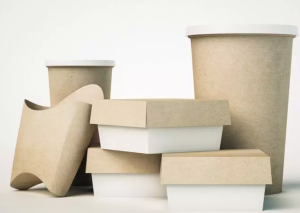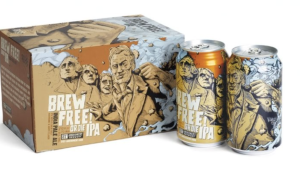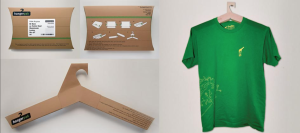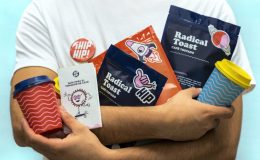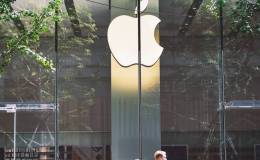2023 heralds a fresh wave of innovation in product packaging design. Let’s explore the latest trends reshaping how products are wrapped and presented, offering a glimpse into the future of packaging.
Minimalistic Packaging
Picture strolling down a supermarket aisle. Products there clamor for your attention with flashy graphics, vibrant colors, and bold fonts—a sensory overload. Minimalistic packaging steps in to offer visual relief. Simplicity is its strength. Stripping away clutter lets the product’s true essence shine.
Minimalistic packaging directs attention to what truly matters: the product itself. It brings calm to chaos, delivering an elegant, memorable experience. This uncluttered design appeals not only to the eyes but also to the soul, fostering a deeper brand connection.
Minimalistic packaging isn’t just about removal; it’s about crafting a meaningful visual language. Key principles include:
Simplicity: Removing the unnecessary, leaving only the essential to convey the product’s identity.
Typography: Embracing clean, sans-serif fonts with whitespace for legible, unobtrusive text.
Color Palette: Utilizing limited, muted colors for serenity, and sometimes monochromatic schemes for a timeless look.
Whitespace: Artfully employing negative space for balance and emphasis on vital elements.
Sustainable Packaging Solutions
Today’s conscientious consumers reject excessive plastic packaging, opting for eco-friendly choices in line with their values, driven by heightened awareness of the environmental toll of waste. This green-minded consumer base is now a powerful industry influencer, compelling businesses to pivot towards sustainable packaging. This isn’t just an ethical move; it’s a savvy business strategy. It garners loyal customers and aligns with global waste reduction efforts.
This shift fuels remarkable changes in packaging materials and methods:
Biodegradable Materials: Cornstarch plastics, mushroom packaging, and biodegradable films replace traditional plastics, naturally reducing their environmental impact.
Recycled and Recyclable Packaging: Brands embrace recycled materials and design easily recyclable packaging, promoting a circular economy and reducing waste.
Minimalist Design: Less becomes more as brands adopt minimalist packaging for an elegant and eco-conscious aesthetic.
Reduced Packaging: Companies rethink sizes, minimizing excess materials and maximizing space efficiency.
Reusable Packaging: Some innovative brands specializing in custom boxes are introducing reusable packaging options. Customers can return the packaging for refilling, reducing the need for single-use containers.
Sustainable Printing: Environmentally friendly inks and dyes gain prominence in packaging, reducing their ecological footprint.
Supply Chain Optimization: Beyond materials, companies optimize supply chains, reducing emissions and energy consumption.
Personalized Packaging
In today’s era of celebrating individuality, personalized packaging goes straight to consumers’ hearts. It’s more than just using their name; it’s forging an emotional bond. When your package arrives with a personal touch, be it a handwritten note, a custom design, or a tailored message, it whispers to the recipient that they’re memorable and cherished.
Consumers now seek products and experiences that mirror their unique preferences. This shift in behavior has birthed a new era in marketing – personalization isn’t merely a strategy; it’s an expectation.
The wonder of personalized packaging is its flexibility. Brands can make their packaging special in many ways, including using Custom Cardboard Boxes and cardboard Packaging.
Custom Printing: Innovations in printing tech make it a breeze for businesses to print custom messages, images, or even individual names on packaging materials. This personalization turns a plain package into a memorable one.
Variable Data Printing (VDP): VDP takes personalization up a notch, letting businesses change text, graphics, and images from one printed piece to the next, all without slowing the printing process. This means each package can be truly unique.
Tailored Packaging Shapes: Beyond printing, brands are toying with unique packaging shapes. Imagine a cosmetics brand crafting a lipstick box in the shape of a customer’s zodiac sign. This doesn’t just surprise the customer but also prompts them to share their personalized experience on social media.
Retro and Nostalgic Packaging
Nostalgia wields incredible power, pulling heartstrings, time-traveling us to the past, and binding us to cherished memories. Vintage packaging taps into this sentiment, serving as an emotional time machine, connecting consumers to simpler days like secrets shared with old friends.
Reviving the past isn’t mimicry; it’s blending the best elements into something fresh. Classic soda brands, for instance, modernize hand-drawn fonts and vibrant colors. Tradition meets innovation, satisfying familiarity and contemporary tastes.
Retro snack packaging follows suit, resurrecting iconic mascots with a modern, animated twist. This fusion of old and new captures nostalgia’s essence while catering to today’s visual preferences.
Sustainable Materials Innovation
Today’s conscientious consumers reject excessive plastic packaging, opting for eco-friendly choices in line with their values, driven by heightened awareness of the environmental toll of waste. This green-minded consumer base is now a powerful industry influencer, compelling businesses to pivot towards sustainable packaging. This isn’t just an ethical move; it’s a savvy business strategy. It garners loyal customers and aligns with global waste reduction efforts.
This shift fuels remarkable changes in packaging materials and methods:
Biodegradable Materials: Cornstarch plastics, mushroom packaging, and biodegradable films replace traditional plastics, naturally reducing their environmental impact.
Recycled and Recyclable Packaging: Brands embrace recycled materials and design easily recyclable packaging, promoting a circular economy and reducing waste.
Minimalist Design: Less becomes more as brands adopt minimalist packaging for an elegant and eco-conscious aesthetic.
Reduced Packaging: Companies rethink sizes, minimizing excess materials and maximizing space efficiency.
Reusable Packaging: Some innovative brands that specialize in custom boxes are introducing reusable packaging options. Customers can return the packaging for refilling, reducing the need for single-use containers.
Sustainable Printing: Environmentally friendly inks and dyes gain prominence in packaging, reducing their ecological footprint.
Supply Chain Optimization: Beyond materials, companies optimize supply chains, reducing emissions and energy consumption.
Storytelling through Packaging
Packaging isn’t merely aesthetics; it’s a vessel for emotions and shared tales. Think about that artisanal chocolate bar you unwrapped once – the paper, fonts, and colors wove a story. Crafting such narratives matters. Packaging, from design to materials, wields subtle cues that spark nostalgia, curiosity, or adventure, forging an emotional link with consumers.
So, why does packaging storytelling matter to brands? It taps into human psychology’s storytelling power. Humans are wired for stories; they engage us emotionally and make us feel part of something larger. Brands that tell compelling packaging stories sell more than products; they sell experiences, lifestyles, and values. It’s about aligning with a brand’s philosophy and becoming part of its narrative.
Take iconic brands like Coca-Cola or Apple; their packaging shares stories of joy, togetherness, and innovation, nurturing unwavering brand loyalty. Consumers don’t just buy; they become brand advocates loyal to these stories.
Moreover, packaging storytelling thrives in today’s digital age. With social media, unboxing experiences go viral. A well-crafted packaging narrative turns routine unboxing into free, emotionally driven brand marketing.
Multifunctional Packaging
Multifunctional packaging is like a chameleon for products – it transforms and enhances the consumer experience. Imagine a coffee cup that turns into a plant pot or a cosmetics box that doubles as a smartphone stand. This packaging evolution goes beyond being disposable.
Versatility is the key:
Reusable Packaging: Containers become more than just containers – a jam jar becomes a glass.
Portability: Snack boxes become plates or trays for those on the move.
Storage Solutions: Cereal boxes seal up, keeping breakfast fresh.
Educational Packaging: Kids’ toy boxes turn into puzzles or games.
It’s packaging that adapts to your changing needs.
Conclusion
The packaging landscape for 2023 is all about sustainability, simplicity, and efficiency. As eco-conscious consumers reshape industries, innovative packaging materials and designs are not just trends; they’re essential steps toward a more responsible and competitive future.
Inner Article Image Credit: Provided by the Author; Thank you!
Featured Image Credit: Provided by the Author; MK2; Unsplash; Thank you!
